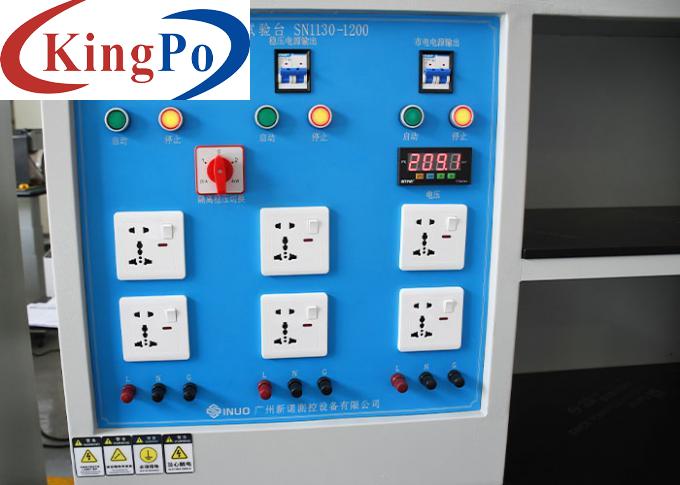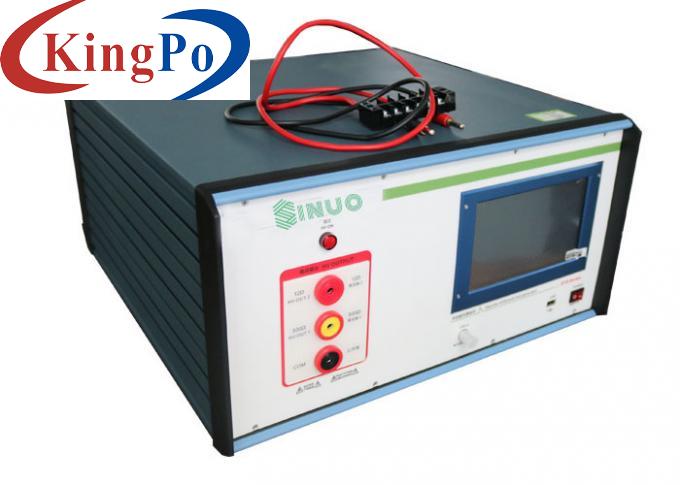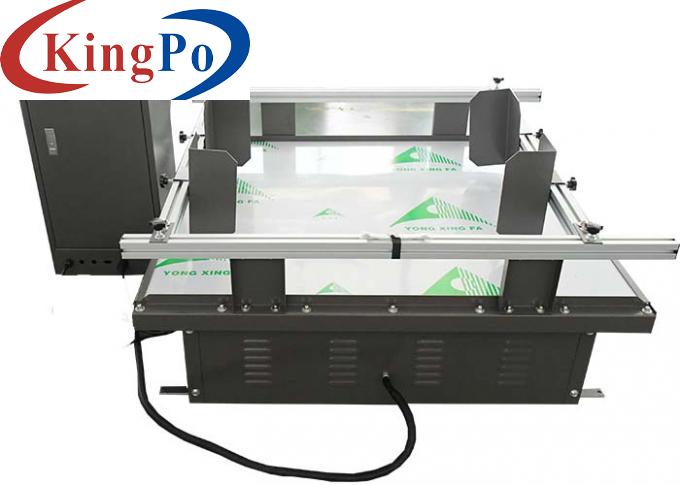Products

Safety Compliance Test Bench For Conduct Electrical Safety Tests On Electronic Devices 220V
Products Description
Safety Compliance Test Bench For Conduct Electrical Safety Tests On Electronic Devices
Product information:
Test purpose: Used to provide stable power supply for measurement of various electricians and electrical products.
Equipment structure: It is made of 1.5-thick all-steel cabinet with baking paint. The tabletop can be used to place test samples, with instrument storage space. It is equipped with three power outputs: isolation + voltage stabilization + mains power. It has powerful functions.
Usage environment: working temperature 0-40℃, humidity 30%-90%.
Features:
A safety test bench, also known as a safety testing station or safety compliance test bench, is a specialized piece of equipment used to conduct electrical safety tests on various electrical and electronic devices. These tests are performed to ensure that the devices meet specific safety standards and regulations, protecting users from potential electrical hazards. Here are the key features and functions typically found in a safety test bench:
Test Points and Connections: A safety test bench provides various test points and connections where the device under test (DUT) can be securely connected for testing. These connections typically include power supply inputs, grounding points, and measurement probes for voltage and current monitoring.
Power Sources: The test bench includes multiple power sources, such as AC and DC power supplies, which can provide the necessary voltages and currents for conducting the safety tests. These power sources allow for simulating different operating conditions and electrical scenarios.
Safety Test Functions: The test bench incorporates a range of safety test functions to evaluate the electrical safety of the DUT. These functions may include:
Insulation Resistance Test: Measures the insulation resistance of the DUT to ensure proper insulation and protection against electrical shocks.
Safety Features: Safety is a critical aspect of a test bench. It may include features such as safety interlocks, emergency stop buttons, insulation protection, and grounding provisions to protect operators while working with potentially hazardous voltages and currents.
Compliance with Standards: The safety test bench is designed to comply with specific safety standards and regulations, such as those defined by organizations like the International Electrotechnical Commission (IEC) or regional regulatory bodies. Compliance ensures that the tests performed on the DUT are in accordance with recognized safety requirements.
Reporting and Documentation: The test bench may have capabilities for generating test reports and documenting the test results. This documentation helps demonstrate compliance with safety standards and provides a record of the testing process for future reference.
Safety test benches are widely used in industries involved in the production and testing of electrical and electronic devices, including consumer electronics, appliances, medical devices, and industrial equipment. They play a crucial role in ensuring that these devices meet the necessary safety standards, protecting users from electrical hazards and ensuring overall product quality and reliability.
Technical Parameters:
1. 1 set of isolation voltage regulator, 5KVA, input 220V, output 0-300V adjustable, with 2 sets of universal sockets and a set of fire, zero and ground terminals.
2. 1 set of regulated power supply, 5KVA, input 220V, output 220V, with 2 sets of universal sockets and a set of fire, zero and ground terminals.
3. 1 set of mains power, with 2 sets of universal sockets and a set of fire and ground wire terminals.
The gear switch switches between mains power, voltage stabilization and isolation, as shown in the figure below. Each group retains two three-hole sockets and a set of terminal blocks.
Ground Continuity Test: Checks the continuity of the ground connection in the DUT to verify that it provides a low-resistance path for electrical faults.
Leakage Current Test: Measures the leakage current flowing through the DUT to ensure it is within safe limits.
Dielectric Withstand Test: Applies a high voltage to the DUT to determine if it can withstand the specified voltage without breakdown.
Functional Test: In some cases, the test bench may include functionality tests to assess the proper operation of the DUT in conjunction with safety testing.
Measurement and Monitoring: The safety test bench includes precise measurement instruments such as multimeters and oscilloscopes to monitor and record electrical parameters during the testing process. These instruments ensure accurate measurement of voltages, currents, resistances, and other relevant parameters.
Dimensions
WDH=1200x1100x1400mm, countertop with physical and chemical board
Power Output
Instrument storage compartment
Double-layer shelf, size WDH=600x400x300mm per grid, the size can be adjusted by yourself
Cabinet
With single cabinet and lock







